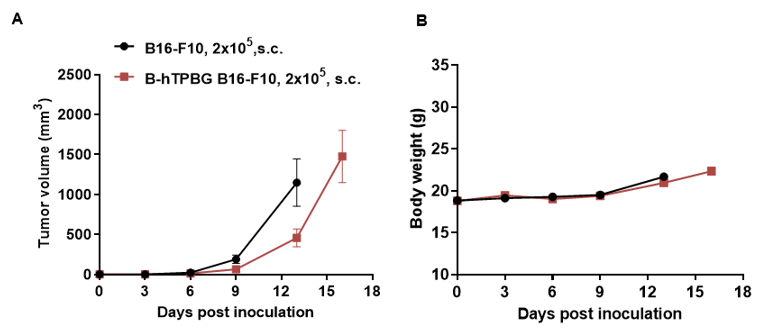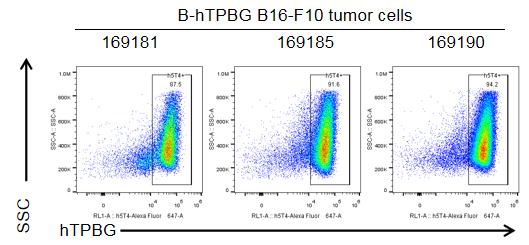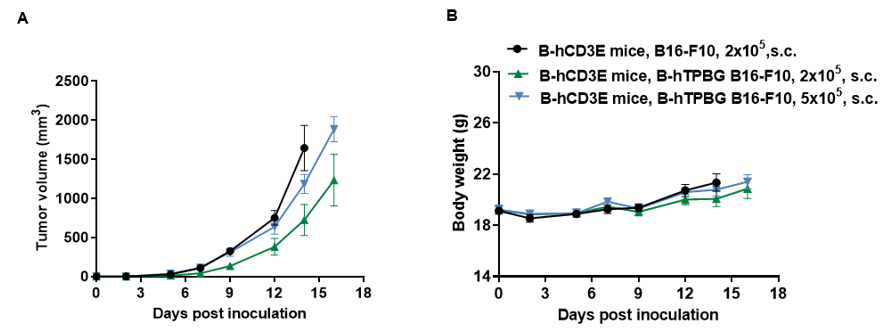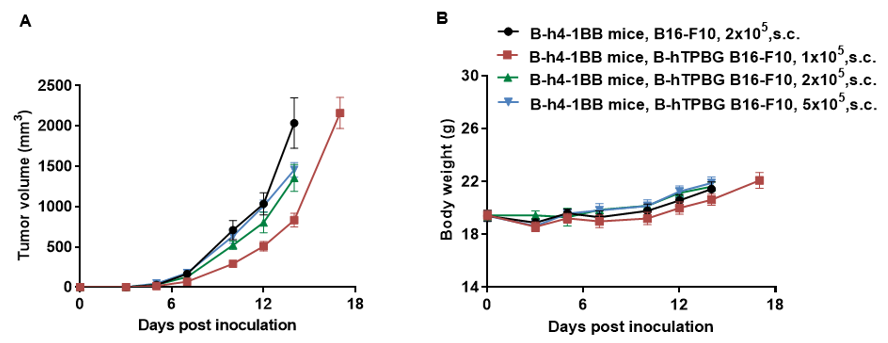|
Common name |
B-hTPBG B16-F10 | Catalog number |
311265 |
| Aliases | 5T4, 5T4AG, M6P1, WAIF1 | Disease | Melanoma |
|
Organism |
Mouse |
Strain | C57BL/6 |
| Tissue types | Skin | Tissue |
Skin |
Description
The mouse Tpbg gene was replaced by human TPBG coding sequence in B-hTPBG B16-F10 cells. Human TPBG is highly expressed on the surface of B-hTPBG B16-F10 cells.
B-hTPBG B16-F10 cells have the capability to establish tumors in vivo and can be used for efficacy studies.



B-hTPBG B16-F10 cells were subcutaneously transplanted into C57BL/6 mice (n=5). At the end of the experiment, tumor cells were harvested and assessed for human TPBG expression by flow cytometry. As shown, human TPBG was highly expressed on the surface of tumor cells. Therefore, B-hTPBG B16-F10 cells can be used for in vivo efficacy studies of novel TPBG therapeutics.
Tumor growth curve & Body weight changes

Subcutaneous homograft tumor growth of B-hTPBG B16-F10 cells. B-hTPBG B16-F10 cells (1x105, 2x105, 5x105) and wild-type B16-F10 cells (2x105) were subcutaneously implanted into B-hCD3E mice (female, 7-9-week-old). Tumor volume and body weight were measured twice a week. (A) Average tumor volume ± SEM. (B) Body weight (Mean± SEM). Volume was expressed in mm3 using the formula: V=0.5 X long diameter X short diameter2. As shown in panel A, B-hTPBG B16-F10 cells were able to establish tumors in vivo and can be used for efficacy studies.
Tumor growth curve & Body weight changes

 苏公网安备:32068402320845号
网站建设:北京分形科技
苏公网安备:32068402320845号
网站建设:北京分形科技






 010-56967680
010-56967680 info@bbctg.com.cn
info@bbctg.com.cn